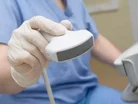A Nintendo Wii style device could transform traditional ultrasound technologies

When playing the Nintendo Wii with his son, Duke University professor Joshua Broder realised the potential the technology could hold in transforming traditional ultrasound technologies.
Utilising a microchip, the controller gains the ability to track the position and movement of a user with precision, and could therefore transform what is currently an existing, and vastly expensive procedure, and enable the production of high resolution, complex 3D images.
The patented 3D-scanner is currently undergoing essential clinical trials, but would become a cost effective, precision led solution. Built as an ‘add on’ for traditional probes, the technology could provide millions of savings for acute healthcare facilities, and become a cost-effective, accessible tool for developing nations, which will provide the required accuracy in detecting abnormalities.
Developed by both Duke and Stanford University, it is hoped that the 3D imaging technology is able to hit the market within two years.
"With trauma patients in the emergency department, we face a dilemma," explains Broder. "Do we take them to the operating room not knowing the extent of their internal injuries or bleeding, or do we risk transporting them to a CT scanner, where their condition could worsen due to a delay in care?
Related stories
- Zebra Medical Vision aims to cater to a surging health imaging market
- Ada Health raises $47mn in new funding round
- Amazon’s pharma ambitions ramp up, causing pharmacy distribution stocks to plunge
“With our new 3D technique, we hope to demonstrate that we can determine the source of bleeding, measure the rate of bleeding right at the bedside and determine whether an operation is really needed."
"With 2D technology you see a visual 'slice' of an organ, but without any context, you may mistake it for another part, or mistake one disease process or injury for another," he continues. "These are all problems that can be solved with the added orientation and holistic context of 3D technology.
“Gaining that ability at an incredibly low cost by taking existing machines and upgrading them seemed like the best solution to us."
"We've tried it on all types of ultrasound machines and it's worked every time without any previous testing. After a quick arc or twist of the probe, the software churns out a 3D image in a matter of seconds."
Bringing patient care from bench to bedside will further healthcare’s move towards patient-centric care and the adoption of new technologies to further this approach.
- How Zipline Uses Drones to Deliver Medicine Across AfricaTechnology & AI
- How is Schneider Electric Making the NHS More Accessible?Hospitals
- How DeepHealth is Using AI to Screen for Breast CancerTechnology & AI
- Martin Carpenter: How Tech is Reshaping Healthcare on JerseyDigital Healthcare



